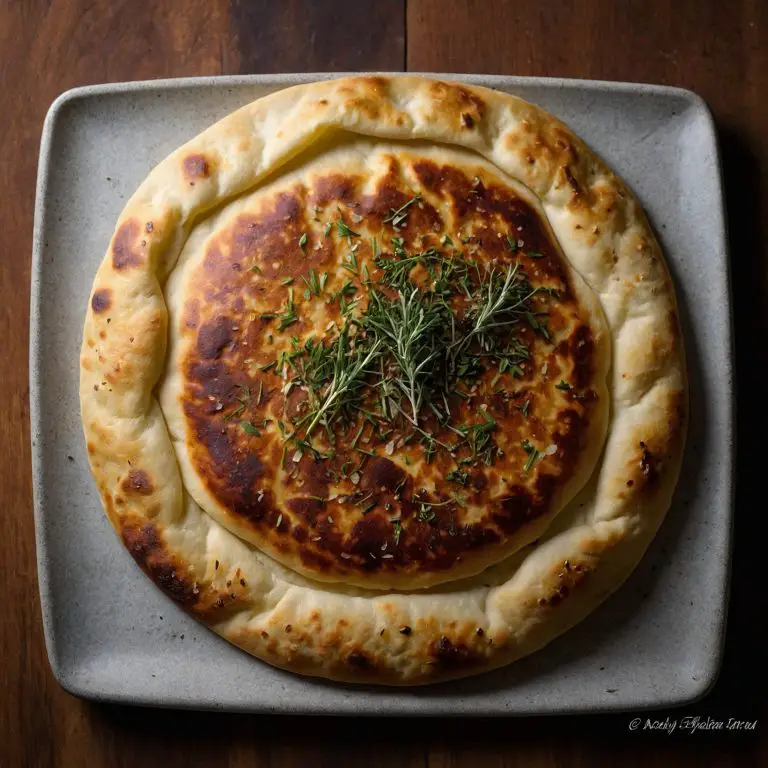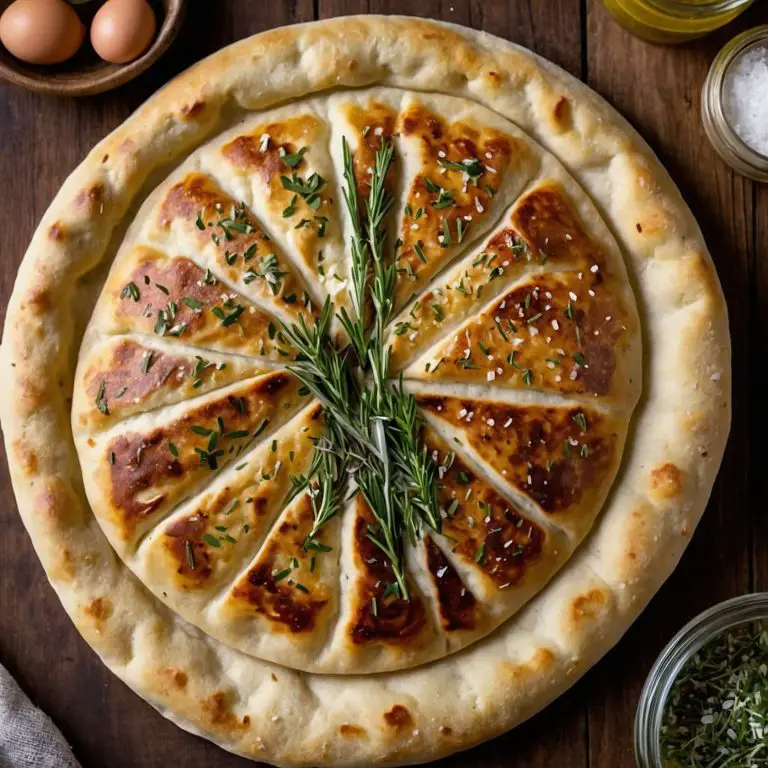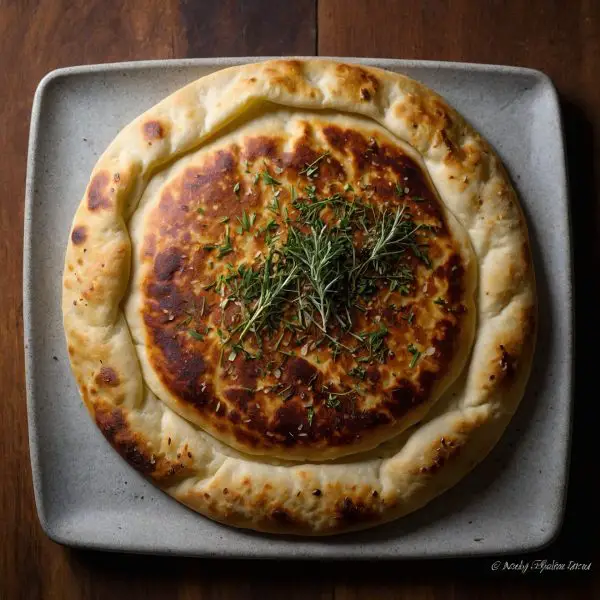As we journey through Slovakia, we discovered the delightful world of Slovak pogacha. This traditional bread can be enjoyed by everyone during any meal.
Slovak Pogacha is known for its soft, fluffy texture and can be stuffed with a variety of fillings, making it a versatile dish that captures the essence of Slovak cuisine.
Our travels have led us to numerous recipes, but the Slovak pogacha stands out for its simplicity and taste.
We’ve gathered the essential ingredients and techniques to bring this dish to life in our very own kitchen. Whether you’re preparing it for a family celebration or just a cozy dinner at home, this recipe is sure to impress.
In our latest recipe collection, we feature authentic Slovak recipes along with tips we’ve learned from local chefs.
Join us as we share step-by-step instructions, ensuring you can create your own delicious Slovak Pogacha that reflects the rich culinary traditions of Slovakia.

Why You’ll Love This Slovak Pogacha Recipe
When we think about traditional food in Slovakia, pogacha stands out as a favorite. This tasty flatbread is not just easy to make but also brings a sense of tradition to our table.
We love how soft and fluffy the texture is. It’s perfect for enjoying with soups, stews, or even on its own. The slight crunch on the outside adds to the charm.
This recipe uses simple ingredients we usually have at home. With scalded milk, flour, and yeast, we can create something truly delightful. It’s satisfying to make a dish that represents Slovak heritage.
Here are some reasons we adore this Slovak Pogacha recipe:
- Quick to Prepare: We can enjoy freshly baked bread in under an hour!
- Versatile: It pairs well with various dishes, from meats to salads.
- Celebrates Tradition: It connects people with Slovak culture, making meals special.
Whether we are sharing it during a holiday meal or a casual dinner, Slovak pogacha always brings warmth and comfort.
This recipe invites us to create a delicious piece of Slovak history right in our kitchen. We can’t wait to bake and enjoy it together!
What Makes This Slovak Pogacha Recipe Special
When we think about Slovak food recipes, Slovak Pogacha stands out. This bread connects us to our heritage and family traditions. It’s more than just a meal; it’s a way to share stories and culture.
The dough is made from simple ingredients like flour, yeast, and scalded milk. This method adds a unique flavor and texture. Each bite is soft and fluffy, which makes it comforting.
What really makes this recipe special is the flexibility in fillings. We can stuff it with mashed potatoes, cheese, or even cabbage. Each filling reflects different regional tastes and family preferences.
Additionally, Slovak Pogacha is often enjoyed during special occasions. Whether at a festive gathering or a quiet family dinner, it brings people together. Serving it alongside traditional Slovak dishes enhances the experience.
The care and time that is put into making this bread show the love for Slovak culture. It’s not just another recipe; it’s a part of their culinary heritage. When we bake Slovak Pogacha, we are also sharing a piece of Slovakia with everyone at our table.
Cooking Equipment Needed
To make Slovak Pogacha, we need some basic cooking equipment. Here’s a list of what we will use:
- Mixing Bowl: A large bowl to combine our ingredients effectively.
- Measuring Cups and Spoons: Accurate measurements help make the bread turn out just right.
- Flour Sifter: This helps eliminate lumps in the flour and gives our dough a better texture.
- Rolling Pin: Essential for rolling out the dough to the right thickness.
Next, we’ll need some cooking tools:
- Baking Sheet: A flat pan where we will place our Slovak Pogacha for baking.
- Parchment Paper: Great for lining the baking sheet to prevent sticking.
- Instant-Read Thermometer: To check the temperature of liquids, ensuring yeast activation.
Finally, let’s not forget some kitchen basics:
- Oven: The key appliance for baking our Slovak Pogacha to a golden finish.
- Kitchen Towel: Useful for covering the dough while it rises, keeping it warm.
Having these tools ready will help make our cooking experience smooth and enjoyable. Let’s gather everything before we start baking!

Cooking Instructions
To make Slovak Pogacha, we’ll need to follow a few simple steps. Let’s get started!
Steps:
- Prepare the Yeast: In a small bowl, mix the lukewarm water with the cake yeast. Let it sit for about 5 minutes until it bubbles.
- Combine Wet Ingredients: In a pot, scald the milk and then let it cool. Add the shortening, salt, and sugar to the milk. Stir until the shortening melts.
- Mix the Dough: In a large bowl, combine 3 cups of flour. Then, add the cooled milk mixture and the yeast. Mix until a dough forms.
- Knead the Dough: Transfer the dough to a floured surface. Knead for about 5-7 minutes until it becomes smooth.
- Let It Rise: Place the dough in a greased bowl. Cover it with a cloth and let it rise in a warm spot for about 1 hour, or until it doubles in size.
- Shape and Bake: Preheat the oven to 375°F (190°C). Shape the risen dough and place it on a baking sheet. Brush with the beaten egg. Bake for 20-25 minutes until golden brown.
Now we’re ready to enjoy our Slovak Pogacha!
Cooking Tips
When making Slovak Pogacha, there are a few tips we can follow to get the best results.
First, make sure our ingredients are fresh.
Using fresh yeast helps the bread rise well and gives it a nice texture.
Temperature matters:
If we’re using milk, scald it and let it cool to about 95°F (36°C). This temperature is perfect for activating the yeast.
We should also prepare our workspace.
Keep it clear and clean so we can easily focus on the recipe.
Don’t rush the dough:
Allow it to rise twice. This step is essential for a soft and fluffy bread. It usually takes about an hour for each rise.
If we’re adding fillings like cheese or potatoes, make sure they’re well-seasoned. This will enhance the flavor of our Slovak Pogacha.
Baking tip:
Preheat the oven before putting the bread in. A hot oven helps it bake evenly and develop a nice crust.
Finally, keeping an eye on the bread while it bakes is wise.
Every oven is different, so we should check for a golden-brown color.
Ingredients Needed for the Slovak Pogacha Recipe
Milk, scalded
Salt
Sugar
Crisco shortening
Flour
Egg, slightly beaten
Yeast
Water
Pagac Filling
Potatoes, peeled, chopped and boiled
Salt
American cheese
Sharp cheddar cheese
Onions, chopped
Butter
Butter, browned
Instructions For Preparing the Slovak Pogacha Recipe
Preparing the Dough
Pour scalded milk over salt, sugar, and shortening, then let it cool to lukewarm. Stir in the egg. Dissolve yeast in water and add to the milk mixture. Mix in half the flour and beat well, then add the remaining flour and mix thoroughly. Turn the dough onto a floured board and knead for 5 minutes. Transfer to a greased bowl and let rise until doubled in size, about 2 hours.
Making the Filling
Brown chopped onion in butter. Drain boiled potatoes, then mash with cheese. Pour in the butter and onions, mix well, and let cool.
Assembling and Baking
Divide the dough in half. Flatten one portion on a cookie sheet or pizza stone. Spread the filling evenly, then roll out the second portion and place it on top. Brush with melted butter and bake at 350°F for 30-40 minutes, until golden brown.

FAQs For the Slovak Pogacha Recipe
Question: What is a traditional Slovak Pogacha Recipe?
A: A traditional Slovak Pogacha recipe, also known as pagach, is a flatbread filled with savory ingredients like mashed potatoes or sautéed cabbage. The dough is made from flour, yeast, milk, eggs, and butter, while the filling typically consists of seasoned mashed potatoes with cheese or sautéed cabbage with onions.
Question: Can I make a sweet version of the Slovak Pogacha Recipe?
A: Yes, while the traditional Slovak Pogacha recipe is savory, variations can include sweet fillings such as fruit preserves or sweetened cheese, adapting the dish to a dessert version.
Question: How is the Slovak Pogacha Recipe traditionally served?
A: The Slovak Pogacha recipe is traditionally served warm, often as a main dish during meatless meals like those during Advent or Lent. It’s commonly enjoyed fresh from the oven, sometimes with a spread of butter on top.
Question: Can I prepare the Slovak Pogacha Recipe in advance?
A: Yes, you can prepare the dough and filling of the Slovak Pogacha recipe in advance. After assembling, refrigerate it until ready to bake, allowing for a convenient make-ahead meal.
Question: Are there regional variations of the Slovak Pogacha Recipe?
A: Yes, regional variations of the Slovak Pogacha recipe exist, with differences in fillings and preparation methods. Some versions include fillings like sauerkraut or different types of cheese, reflecting local tastes and traditions.

Slovak Pogacha Recipe
Ingredients
- 3/4 cup milk scalded
- 1 teaspoon salt
- 4 tablespoons sugar
- 3 tablespoons shortening Crisco
- 3 cups flour
- 1 egg slightly beaten
- 1 yeast cake
- 1/4 cup water lukewarm
Pagac Filling
- 5 potatoes peeled, chopped and boiled
- 1 teaspoon salt
- 4 ounces cheese American
- 4 ounces cheese sharp cheddar
- 2 onions small , chopped
- 2 tablespoons butter
- 1/2 cup butter browned
Instructions
Preparing the Dough
- Pour scalded milk over salt, sugar, and shortening, then let it cool to lukewarm. Stir in the egg. Dissolve yeast in water and add to the milk mixture. Mix in half the flour and beat well, then add the remaining flour and mix thoroughly. Turn the dough onto a floured board and knead for 5 minutes. Transfer to a greased bowl and let rise until doubled in size, about 2 hours.
Making the Filling
- Brown chopped onion in butter. Drain boiled potatoes, then mash with cheese. Pour in the butter and onions, mix well, and let cool.
Assembling and Baking
- Divide the dough in half. Flatten one portion on a cookie sheet or pizza stone. Spread the filling evenly, then roll out the second portion and place it on top. Brush with melted butter and bake at 350°F for 30-40 minutes, until golden brown.
Nutrition



3 comments
I was a little nervous about trying the Slovak Pogacha, but it turned out amazing! The flatbread was soft and buttery with just the right amount of crispness on the outside. It paired perfectly with the savory dishes I made. My guests couldn’t get enough of it, and it quickly disappeared off the table!
I dont know about you guys, but Im curious – do you think adding a twist to this Slovak Pogacha recipe would make it even better? Maybe some spicy peppers or a sprinkle of chocolate chips? Lets discuss!
Im not convinced about the hype around this Slovak Pogacha recipe. Seems like a lot of effort for just bread. Anyone else feel like its overrated?